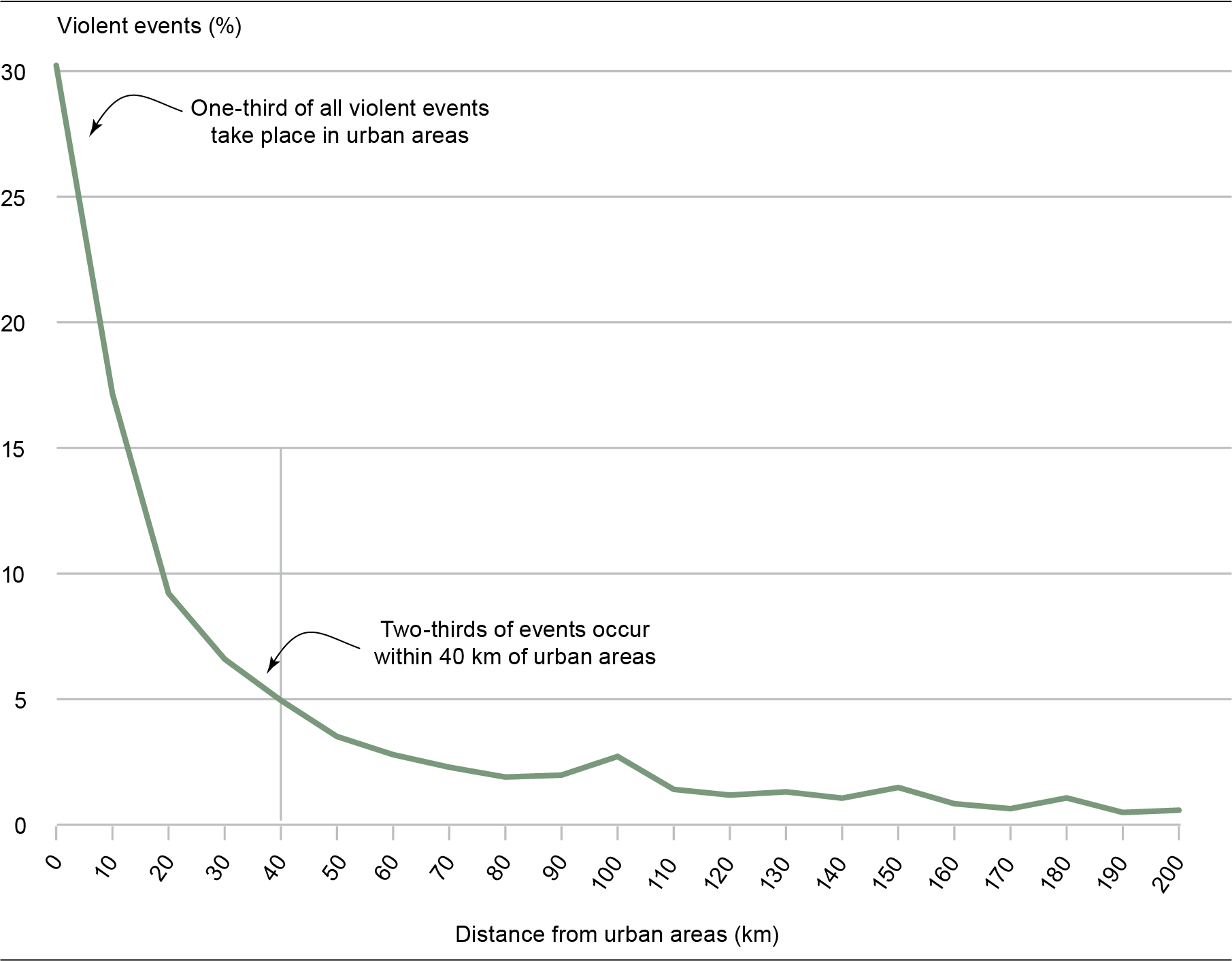Mapping Africa Transformations
Security
Instability is on the rise in the Sahel and West Africa. Violent events and civilian casualties are increasing. Our tools help policy makers to better understand the geography of violence which leads to better designed, place-based and contextualised policies. Security is analysed under three dimensions: i) the Spatial Conflict Dynamics indicator (SCDi); ii) borders and iii) urban/rural.
Despite rapid urbanisation, violence remains predominantly rural in West Africa. More than 40% of all events and fatalities recorded between 2000-22 occurred in rural areas, located in the outskirts of intermediary cities. When violence does occur in urban areas, it is more frequent in small urban agglomerations of less than 100 000 inhabitants rather than in medium or large urban areas.
Overall, urban areas have seen a decrease in the proportion of violent events over time: from 70% in 2012 to less than 20% in 2022 in West Africa. North Africa shows a similar trend: from 80% in 2012 to 40% in 2022.
Violent events and fatalities by demographic categories in North and West Africa 2000-22

Source: OCDE/SWAC (2023), based on data from ACLED (2020) and WorldPop (2022) data. ACLED data is publicly available.
Violent events by demographic categories in North and West Africa, 2000-22

Source: Authors, based on ACLED (2022) and WorldPop (2022) data. ACLED and WorldPop data are publicly available.
Violence in rural areas tends to cut off major cities from their hinterlands. Since the mid-2010s, Niamey, Ouagadougou or Bamako have been surrounded by ever-expanding areas of conflict. Movement and communication between secure areas around these centres has become increasingly difficult as adjacent rural areas have become zones of profound insecurity. One third-of all violent events occur in urban areas, with two-thirds taking place within 40km of urban areas.
Violent events by distance from urban areas in North and West Africa, 2000-22
In Burkina Faso, Mali and Niger, most violent events have occurred in rural areas. In Mali, more than 80% of violent events in 2022 occurred in rural areas. All three countries show similar trends as they are all facing major jihadist insurgencies. In 2021, jihadist organisations accounted for 80% of rural violence and less than 10% of urban violence.
Fatalities in Burkina Faso and neighbouring countries, 2001



